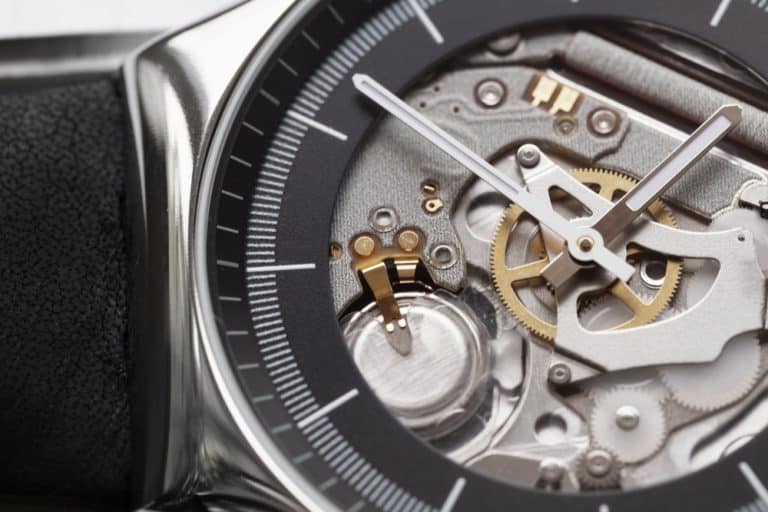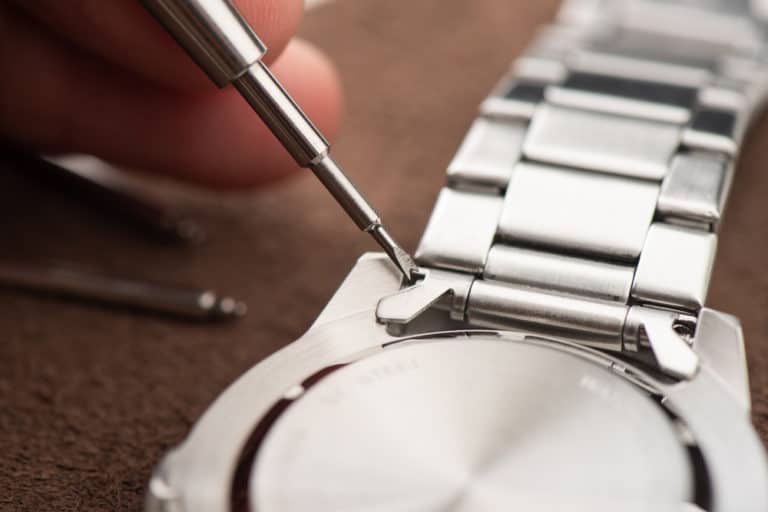There is no doubt that a digital watch is a hunk of technology. However, what is inside of it? Is it springs and gears like mechanical watches, or do digital watches have their own unique innards?
Inside a digital watch is a circuit board kept in place by screws. There is also a cell battery, a microchip coated with epoxy, LCD display connectors, a quartz crystal, polarizer filters, top and bottom glass coated with conductive material, and a liquid crystal.
Digital watches are well-liked for a reason. A digital watch is undoubtedly the first go-to when you need to know the precise time. Its many features like alarms, timers, stopwatches, etc., are simple to add. It is also more durable mechanically than other watches. However, have you wondered what goes on inside a digital watch? Here is all you need to know about what is inside a digital watch.
All About What Is Inside A Digital Watch
When you disassemble a digital watch, you find out just what the principle behind it is. After uncasing the module container, some screws keep a printed circuit board in place. Once that is done, you’ll notice that a digital watch is much like any other electronic device.
This is because a digital watch has a cell battery inside that powers it. There is also an LCD display, where you usually see digits. Those digits show the time and dates. Looking at the circuit board, there are several components worth noting.
First is the component situated in the middle of the circuit board. This is a microchip that is coated with epoxy. Its function is to control processing and the manipulation of the time and date digits displayed on the LCD display.
Furthermore, inside there are also LCD display connectors and a quartz crystal oscillator which is cased in a silver-colored component. When an electric current passes through the quartz crystal, it causes the crystal to deform. This leads to it vibrating. Wondering how many times it vibrates? It will vibrate roughly 32,768 times in one second.
This vibration is counted and measured by the microchip in the center. The LCD consists of two layers that basically look sandwiched together. Technically, they are two polarizer filters that allow light to go through them based on a certain condition.
Inside those polarizer filters are two additional layers of glass coated with transparent conductive material on the inner surfaces. These are called the top and bottom LCD glasses. They act as an anode and cathode of the LCD display.
You will find a liquid crystal between those two glasses coated with a conductive material. When charged, this liquid crystal is the condition mentioned above that will allow light to pass through or, in some cases, not pass through. Lastly, there is a reflective surface on a digital watch that reflects light through the display.
Are Digits Also Inside A Digital Watch?
Suppose you’re wondering if the digits shown on display are also inside the watch. In that case, the answer is no. For a digit to be shown on the LCD display, several segments must be switched on. There are a series of connections that get switched on on the PCB.
These connections then create flickering shapes which appear as digits to the human eye. The white parts you can see are all separate LEDs that can be independently lighted. Every LED has its own wiring. Thus, storing the data required to draw a certain character on this display requires one byte.
The watch requires more bytes to store since it needs to display more than one character. The watch actually uses the same origin of the regulating byte data and cycles between controlling characters very quickly to reduce space and cost.
A few hundred times per second of changing which line is illuminated causes each character to appear to be lit simultaneously. This is dependent on eyesight persistence. Therefore, once you actually move the watch or the eyes, the brain begins to catch up on the cues showing that the characters aren’t actually lighted simultaneously.
Did Digital Watches Always Have Binary And Batteries Inside?
It is easy to forget that digital watches weren’t always as tech savvy as they are nowadays. The first digital displays can be traced back all the way to the early 1800s. Pocket watches were considered to be at the forefront of digital timekeeping.
However, the digital watch trend wasn’t all that well-known until the 1970s with the innovation of electronic movements. The emphasis of the olden-day digit watches was on the digits themselves. The prototypes were mechanical timepieces that essentially time the appearance of new digits minutely by spring-loaded.
Simply put, digital watches back then had heavy disks carrying various digits. The movement was heavy, and the wounds could not make it past a single day without them needing to be wound again. This and the fact that those pieces inside the digital watches were hand-made led to watch manufacturers abandoning digital timekeeping.
The Pulsar prototype, created in 1970 by the Hamilton Watch Company, was the world’s first digital timepiece. The chairman of Hamilton’s Pulsar division, John Bergey, claimed that the futuristic digital watch that Hamilton produced for the 1968 sci-fi film 2001 served as an inspiration for him to create a digital timepiece.
Until 1975, digital watches were extremely pricey, just out of the reach of average customers. Then, Texas Instruments began massively producing LED timepieces housed in plastic cases. Pulsar lost millions on these watches, which were initially just $20 and subsequently $10 in 1976.
The brand was also sold to rivals twice in that same year. Ultimately, Pulsar became a subsidiary of Seiko. They resumed producing exclusively analog quartz watches.

Conclusion
As you can see, many components make up a digital watch. Each of these components plays a role in how the watch works. Interestingly, digital watches did not always have the tech specs they have today. However, it is quite clear that a lot of effort has been put into the insides of digital watches to make them one of the best out there.







